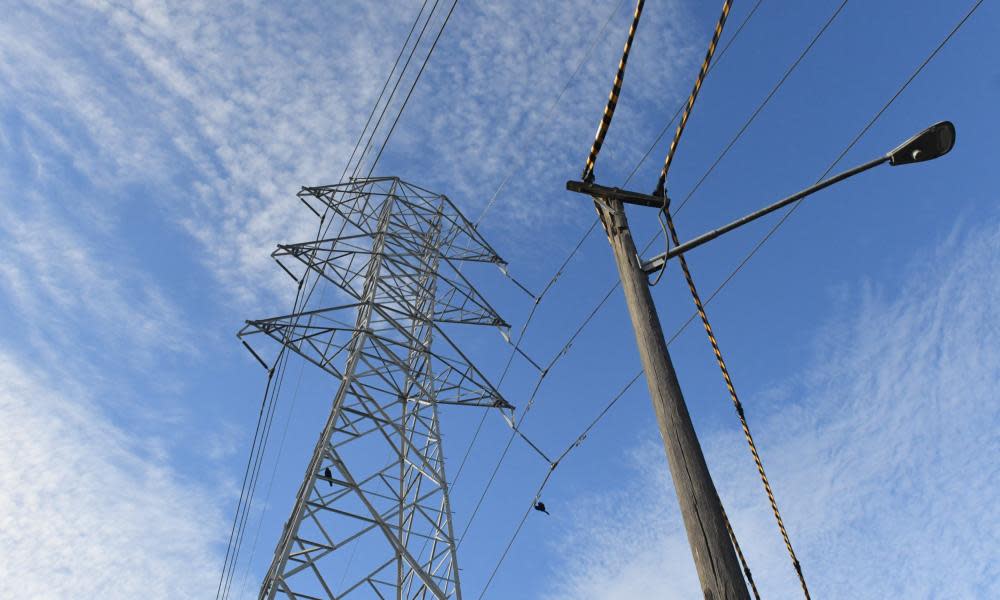Australia’s energy market operator plans for net zero by 2050 as Morrison stalls

While Scott Morrison is yet to give a formal commitment to achieving net zero by 2050, Australia’s energy market operator has added the mid-century scenario to its forward planning.
In its latest Inputs, Assumptions and Scenarios Report, released on Friday, the Australian Energy Market Operator (Aemo) has added new planning scenarios – including net zero by 2050 and a “hydrogen superpower” option.
Aemo’s chief system design officer, Alex Wonhas, said the updated scenario planning reflected the accelerating transition in Australia’s energy market and “overwhelming” calls from stakeholders for the energy market operator to produce scenarios “to reflect the observed rapid decarbonisation of the energy sector and pathways to achieve net-zero emissions across the economy”.
Stakeholders say Aemo initially floated a more prominent transitional role for gas in line with the Morrison government’s “gas-fired recovery” rhetoric, but this idea was resisted during consultation. Aemo spent 10 months consulting with consumer groups, governments, individuals and industry on its plans.
In the report Aemo notes “renewable generation, complemented by firming capacity, remains the least-cost option to replace ageing coal-fired generation”.
Ahead of the release of the new scenarios on Friday, Wonhas said there was “no doubt the energy transition is forging ahead” and “we have tried to capture this through a range of scenarios characterised by the growth of electricity demand and the pace of decarbonisation”.
He said Aemo had developed “two central scenarios” – one forecasting “steady progress” with the transition led by existing government policy, corporate abatement goals and continued growth in home solar uptake.
The second, net zero, was “driven by accelerating technology-led emission abatement based on extensive research and development, policy and progressive tightening of emission targets to meet an economy-wide net zero target by 2050”.
“We have also mapped out a progressive hydrogen superpower scenario based on a power system to support the development of a renewable hydrogen export economy,” Wonhas said.
The net zero scenario outlined by Aemo says domestic action towards that end point would be driven by “technology advancements” – an observation in line with government messaging.
It plots the bulk of the transition happening in the 2030s and 2040s rather in the current decade, noting that “short-term activities in low emission technology research and development enable deployment of commercially viable alternatives to emissions-intensive activities in the 2030s and 2040s, with stronger economy-wide decarbonisation, particularly industrial electrification, as 2050 approaches”.
Part of the transition would involve electric vehicles becoming “more prevalent over time and consumers gradually switch[ing] to using electricity to heat their homes and businesses”.
Morrison is under considerable diplomatic pressure to make a stronger commitment to emissions reduction at the Cop26 in Glasgow later this year. The prime minister says he wants to achieve net zero, “preferably” by 2050, with the transition to be delivered by technology “not taxes” – a mantra that is repeated on high rotation, even though no major party is proposing a carbon tax.
But it is unclear whether that aspiration will win the day, with some Nationals resisting any formal commitment.
In Aemo’s “steady progress” scenario, the transition is driven by “existing government policy commitments”, by the choices of consumers, predominantly through household solar uptake, by the abatement activity of businesses “and technology cost reductions”.
The point of Aemo producing scenarios is to help investors and policymakers understand market trends, which drives investment decisions in generation, transmission and storage.
One of the factors Aemo took into account was the impact of the pandemic. On its “slow change” scenario, global economic growth remains suppressed because recovery from the pandemic is slow, and countries retreat into isolationism and protectionism.
That pessimistic scenario sees government policy in Australia focused on “supporting the ailing domestic economy, with decarbonisation policy being less of a priority” and internationally the world falls short of current decarbonisation objectives under the Paris agreement.
The worst-case scenario is countered by two upbeat alternatives – a “step change” scenario where there is coordinated “economy-wide action that efficiently and effectively tackles the challenge of rapidly lowering emissions”.
In the “hydrogen superpower” scenario, there is “strong global action towards emissions reduction, with significant technological breakthroughs and social change to support low and zero emissions technologies” and “renewable energy exports via hydrogen become a significant part of Australia’s economy”.
It says the object of the exercise was to identified five “plausible, distinct, internally consistent scenarios that cover a broad range of potential future worlds that could materially impact the energy sector”.

 Yahoo News
Yahoo News 
